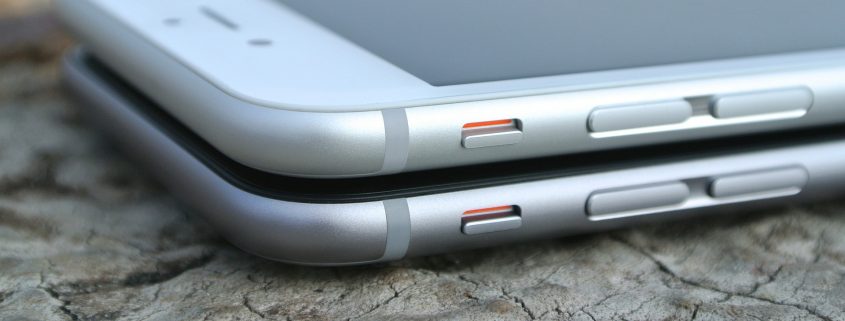The Most Common Mobile Campaign Types
Wherever you go, mobile follows! Since the daily screen time is shifting more and more in the direction of mobile devices, advertisers and marketers need to spend their marketing budget on campaigns especially for mobile devices. In the following post, we want to give you a general overview of the types of mobile campaigns.
User Acquisition
User acquisition is an important factor for app marketers and developers. There are are various ways how to advertise an app and to calculate the budget for different campaigns.
Install Campaigns (CPI)
Install campaigns are the easiest to understand: The advertiser pays the publisher for every install generated (Cost Per Install / CPI). In general, the install result in a rewarded for the user or be non-incentivized. Should the advertiser want the campaign to be incentivized, he/she can expect the download rates to be very high because users mostly install the app in order to get a reward. For the publisher, incentivized installs are quite interesting, because they only want to deliver installs and do not care what happens after the install. For marketers, non-incentivized installs are more interesting because a (probably) targeted group of users downloaded the app following their own interest. This implies a higher retention rate and thus more revenue for the developer of the app. To conclude, the difference between rewarded and non-incentivized installs reaches as far as the shifting of risk with regard to marketer and publisher. Rewarded installs equate to a low risk for the publisher but high risk for the advertiser. Non-incent installs equate to a high risk for the publisher, (as it is not clear what percentage of his/her audience will install the advertised app) and low risk for the publisher.
Action Campaigns (CPA)
Action campaigns are always rewarded for the user, as there is an objective, which has to be fulfilled. The reward could be an extra life for a game or virtual currency for a reward app. This type of mobile campaign allows the advertisers to spend budget only if the user completed a specific action in their app. This leads to the user getting to know the product a bit better, increasingthe chances for continued use. As with the incentivized install campaigns, there is a risk for the advertiser: the audience of the publisher might only take the specified action to get the reward. However, as there is a specific action to be fulfilled and the user gets to know the app better, the retention rate is mostly higher than with standard CPI.
Mobile Video
Videos are THE ad format to meet the needs of app developers and users equally. What makes them so unique and efficient for both parties?
From a marketing point of view, videos as advertisements are very unique because it is so versatile to monetize and to calculate the bid. What advertisers should know first: a study showed, that 71% of mobile game players think that video ads are the preferred way to “pay” for an app.
When using video ads, marketers can also choose to reward users or to leave it non-incentivized. The possibility to choose the right bid-type is what makes it special.
The three main bid-types are Cost Per Install (CPI), Cost Per Click (CPC) and Cost Per View (CPV). Cost Per Install is used in the same way as in the “Install Campaign”. CPI video ads can be both, rewarded and non-incentivized: the advertisers pay the publisher for installs delivered. The CPC bid-type only rewards the user when he/she interacts with an add and gets directed to a landing of a mobile browser or the page of an app store. As the action of clicking means less work for the user than installing an app, the reward is mostly a bit smaller. However, this can also imply that the user interacting with the video is generally interested in the product. Non-rewarded video ads behave similarly. With this mobile campaign type, the publisher carries the risk and the advertiser only pays when a user is interacting with the ad.
Display Ad Campaigns
Display ads like banners and interstitials are the oldest advertising formats on mobile devices and have their roots in real life advertising. The bid type is CPM (Cost Per Mille) and non-incentivized for the users. Hence, the advertiser pays the publisher for every 1000 times the ad is displayed in his/her app or website. The better the targeting is, the higher the CPM will be.
Lead Generation Campaigns
To get in contact with an audience and to reach out to users’ personal devices is very important for brands and companies. To generate these leads, there are two main campaign types: sign up-campaigns and purchase campaigns. To get more detailed information, click here.
Sign Up Campaigns
Sign up campaigns are used to subscribe user to the newsletter of an advertiser or let them create an account on their website. This means the growth of the customer base and turning them into loyal, returning customers. The bid type for this mobile campaign type is Cost Per Lead (CPL) as the publisher gets paid for every subscription or other lead the advertiser chooses. So, like with install campaigns, the publishers carries most of the risk, as he need to generate leads in order to get payed. The campaigns can be rewarded or non-incentivized.
Purchase Campaigns
It’s another possibilty to let the user make a purchase directly on the site of the publisher. The bid type is Cost Per Order/Cost Per Sale (CPO/CPS). Advertisers can use this campaign type to bring attention to a certain product or to deliver on sales targets. This type of campaign may also be rewarded, for example with a discount or special sale. All in all, the publisher has the risk as he/she only gets paid when the user actually makes a purchase. For the advertiser, this campaign type is interesting because it is very easy to calculate the revenue of this mobile campaign type.
Brand Marketing
Brand marketing on mobile devices is crucial when trying to achieve brand awareness. As mobile devices dominate our daily lives, they are the perfect hotbed to make your brand famous. Brand marketing on mobile devices is mostly done with the help of display campaigns like banners, interstitials and mobile videos. Social media is also an important factor to generate brand awareness. The ad-formats for brand marketing were mentioned in the previous article. These are banners, videos and intersitials. As the advertiser wants to drive awareness for a brand in general and not a product, these ads are mostly non-incentivized. For the advertiser, it can be enough if the audience just recognizes the brand’s existence.
Retargeting
A very interesting field of mobile marketing is retargeting, because the target users are based on previous actions they made on the internet. If a user was on a website or previously saw a certain offer, his/her device will be marked with the help of a cookie. The advertiser can then show his advertisements to the user on other websites via an ad exchange. Oftentimes, retargeting is used when a customer has seen a product or an app, but did not buy/install it. It is mostly combined with less expensive ad formats (like banner ads) to significantly increase the conversions. It has been shown that creatives implemented with a call-to-action (CTA) are even more successful in converting visitors of a website to customers.
With the help of ayeT-Studios, you can choose from all different campaign types to generate users, leads, purchases or even brand awareness. Try it for free!




Leave a Reply
Want to join the discussion?Feel free to contribute!